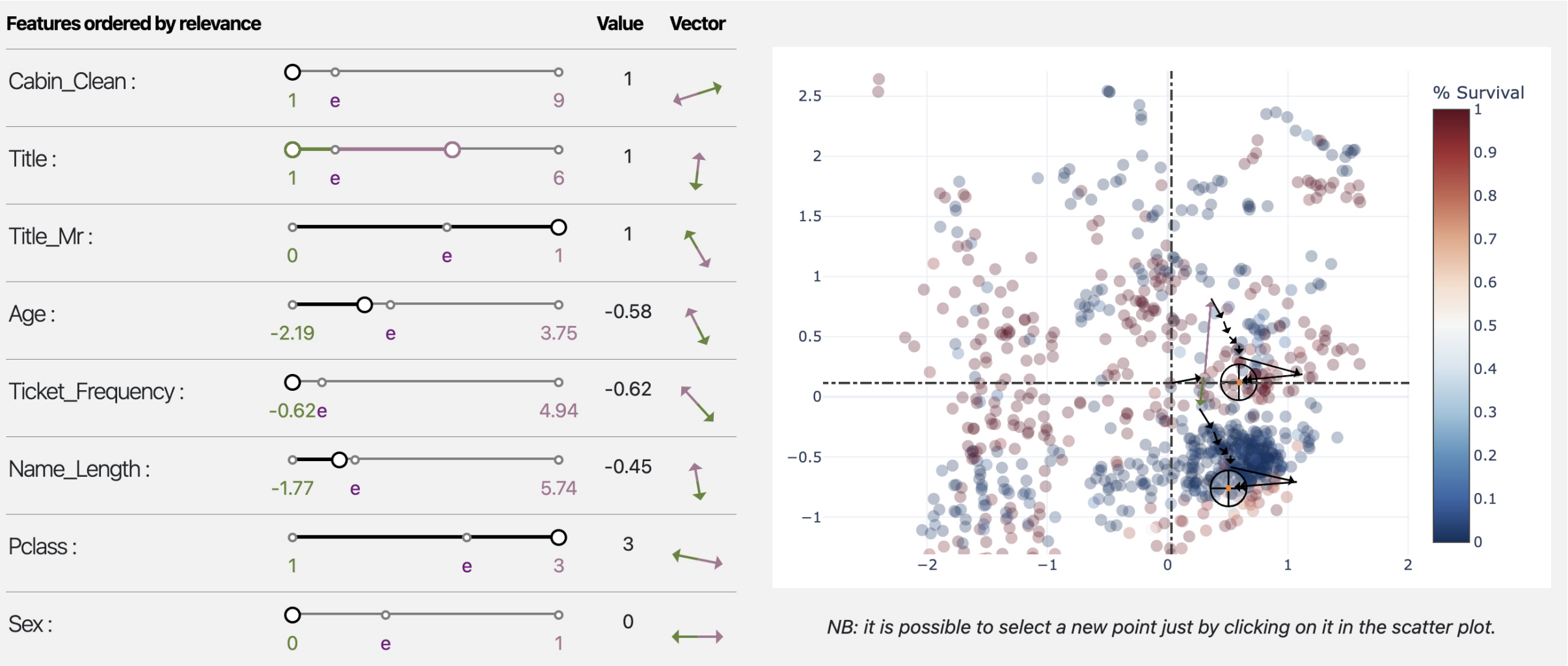Daniele Fadda

Involved in the research line 3
Role: Researcher
Affiliation: ISTI - CNR Pisa
26.
[BRF2022]
Bodria Francesco, Rinzivillo Salvatore, Fadda Daniele, Guidotti Riccardo, Fosca Giannotti, Pedreschi Dino (2022) - EUROVIS 2022. In Proceedings of the 2022 Conference Eurovis 2022
Abstract
Autoencoders are a powerful yet opaque feature reduction technique, on top of which we propose a novel way for the joint visual exploration of both latent and real space. By interactively exploiting the mapping between latent and real features, it is possible to unveil the meaning of latent features while providing deeper insight into the original variables. To achieve this goal, we exploit and re-adapt existing approaches from eXplainable Artificial Intelligence (XAI) to understand the relationships between the input and latent features. The uncovered relationships between input features and latent ones allow the user to understand the data structure concerning external variables such as the predictions of a classification model. We developed an interactive framework that visually explores the latent space and allows the user to understand the relationships of the input features with model prediction.
27.
[PBF2022]Panigutti Cecilia, Beretta Andrea, Fadda Daniele , Giannotti Fosca, Pedreschi Dino, Perotti Alan, Rinzivillo Salvatore (2022). In ACM Transactions on Interactive Intelligent Systems
Abstract
eXplainable AI (XAI) involves two intertwined but separate challenges: the development of techniques to extract explanations from black-box AI models, and the way such explanations are presented to users, i.e., the explanation user interface. Despite its importance, the second aspect has received limited attention so far in the literature. Effective AI explanation interfaces are fundamental for allowing human decision-makers to take advantage and oversee high-risk AI systems effectively. Following an iterative design approach, we present the first cycle of prototyping-testing-redesigning of an explainable AI technique, and its explanation user interface for clinical Decision Support Systems (DSS). We first present an XAI technique that meets the technical requirements of the healthcare domain: sequential, ontology-linked patient data, and multi-label classification tasks. We demonstrate its applicability to explain a clinical DSS, and we design a first prototype of an explanation user interface. Next, we test such a prototype with healthcare providers and collect their feedback, with a two-fold outcome: first, we obtain evidence that explanations increase users' trust in the XAI system, and second, we obtain useful insights on the perceived deficiencies of their interaction with the system, so that we can re-design a better, more human-centered explanation interface.
Research Line 1▪3▪4